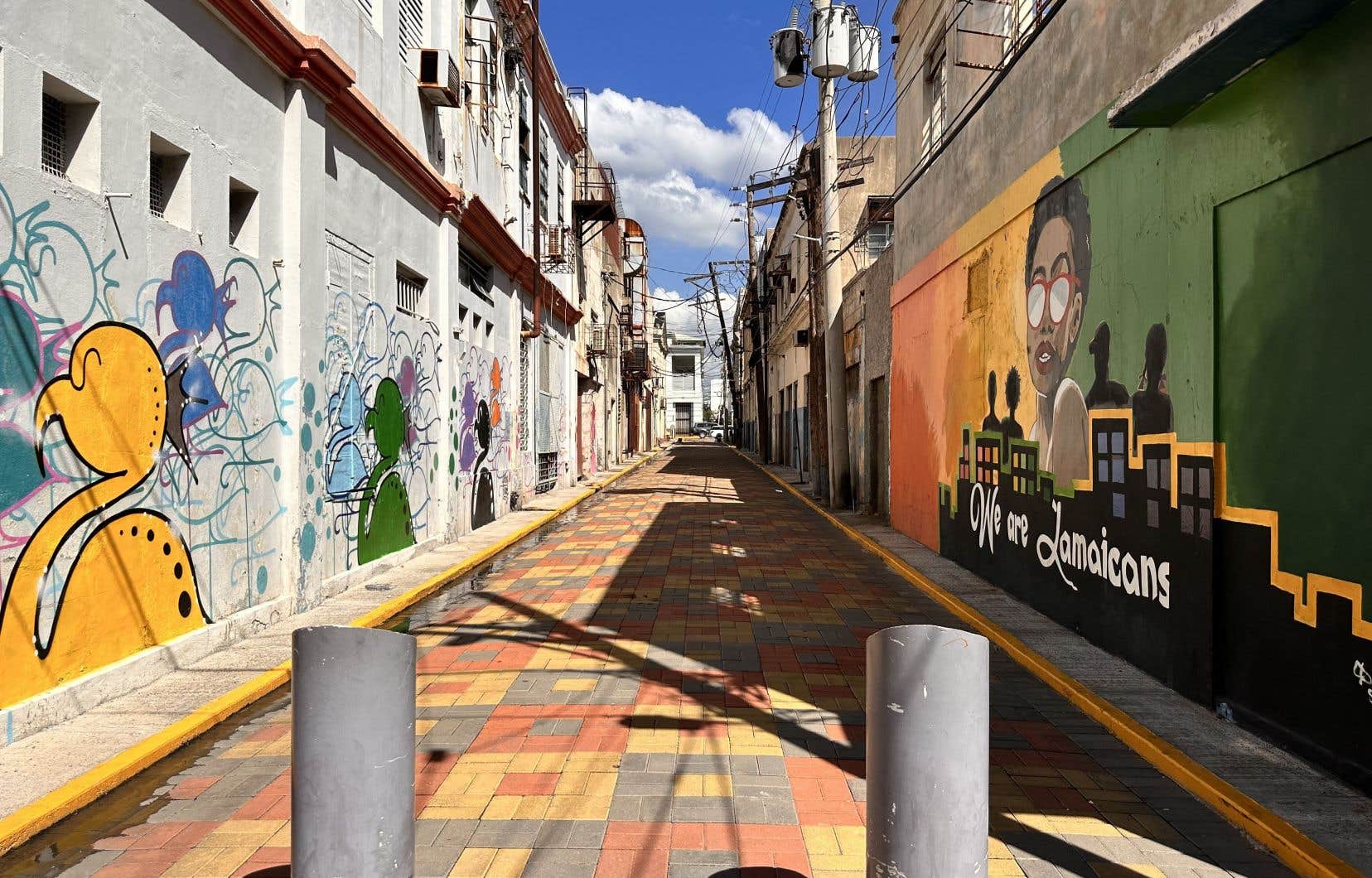This text is part of the special Pleasures notebook
The world capital of reggae has focused on art and culture to get rid of the bad reputation that it has been carrying for years like a heavy ball and chain.
Not so long ago, it was not good to walk in the downtown of Kingston. The south of the Jamaican capital looked like a ghost town. It was abandoned and given over to the malevolent spirits who haunted the area like so many duppies, these specters of Caribbean folklore well known to Marlon James. This author wrote the fantastic novel Brief Stories of Seven Murdersset against the backdrop of 1970s Kingston.
Today, this same city center seems to be waking up from the nightmare in which it has been plunged for too long. We are not going to lie to each other, all traces of this dark period have not been completely erased in an urban landscape which still suffers, here and there, the after-effects of decades of poverty and crime. But the revitalization process, which was initiated well before the pandemic to revive the activities of the downtownis starting to bear fruit.
A real rebirth
Major companies, such as Digicel and GraceKennedy, have launched major maneuvers by taking up residence along the imposing Kingston Bay. The Ministry of Foreign Affairs and Foreign Trade followed suit, moving its offices not far away. In the process, hotel giant Hilton established its flagship Tapestry range — the first of its kind in the Caribbean — at the corner of Ocean Boulevard and King Street.
From the top of its 12 floors, the aptly named ROK hotel (for “Renaissance of Downtown Kingston”) opened its doors in the summer of 2022. It stands on the seafront as a symbol of the renewal of a center -city which is slowly but surely regaining color. Enhanced by the works of local artists who brighten up its public spaces, the 168-room establishment targets both business customers and tourists eager for cultural discoveries and urban adventures.
Less than a five-minute walk from the ROK, the National Gallery of Jamaica holds fabulous treasures within its walls. Starting with an imposing collection of works by the “mother of Jamaican art”, Edna Manley. The famous artist is known for having been the wife of Jamaican Prime Minister Norman Manley. Their son Michael Manley also followed in his father’s footsteps by taking over the government. But the artist is especially renowned for having carved an iconic statue from mahogany wood in the heart of the 1930s.
Art fills the streets
The original version of Negro Aroused, which represents the struggle for the emancipation of black people, is one of the centerpieces of the oldest and largest public art museum in the English-speaking Caribbean. A bronze reproduction of Edna Manley’s sculpture also stands at the foot of the ROK. And this, right opposite the ancient city of Port Royal, a hotbed of piracy and slave trafficking, largely engulfed by water following the terrible earthquake of 1692.
Turning our back on the sea to delve a little deeper into the bowels of the city which joined the UNESCO creative cities network in 2015, other exciting discoveries await us. Along Water alley, mural works have flourished under the influence of good souls determined to bring the famous Funky Kingston celebrated by the group Toots and The Maytals in an album described as pure “perfection” by music critic Lester Bangs.
These frescoes are, for the most part, the fruit of the work of Kingston Creative. Founded in 2017, the NPO aims to transform downtown through art and culture. The establishment organizes guided tours of this open-air museum where portraits of legends such as Toots Hibbert, Desmond Dekker and Gregory Isaacs, author of the fabulous hit produced by Sly & Robbie, meet. Going Downtown. So many works that remind us that downtown Kingston has long been the epicenter of Jamaican music.
Solidarity and sustainable tourism
“An important part of our culture was born in these streets,” Janet Crick, director of Kingston Creative, tells me, in the shadow of a long mural representing the various musical trends coming out of the legendary Beat Street studios, from ska to dancehall. through reggae. “We want to pass on this part of heritage to people who visit Jamaica without necessarily being aware of this history. “It’s something you won’t find anywhere else on the island,” she says.
Far from being limited to beautiful sandy beaches in Negril, Montego Bay or Ocho Rios, Jamaica can also rely on an infinitely rich cultural heritage to build the foundations of inclusive and sustainable tourism. “The more people come downtown, the more opportunities there are to give back to the community and to the people who have never left the neighborhood, even during the darkest times,” said Ms.me Crick. This is really what motivates us in this revitalization process. »
This content was produced by the Special Publications team at Duty, relating to marketing. The writing of the Duty did not take part.
